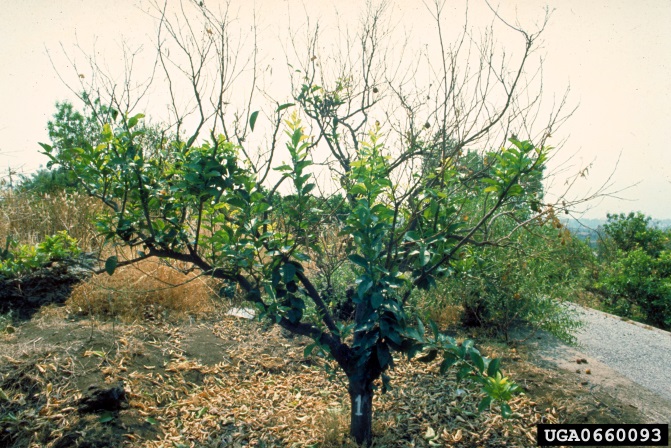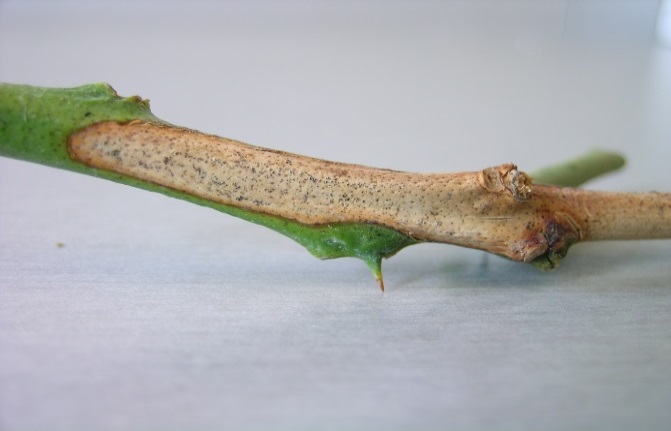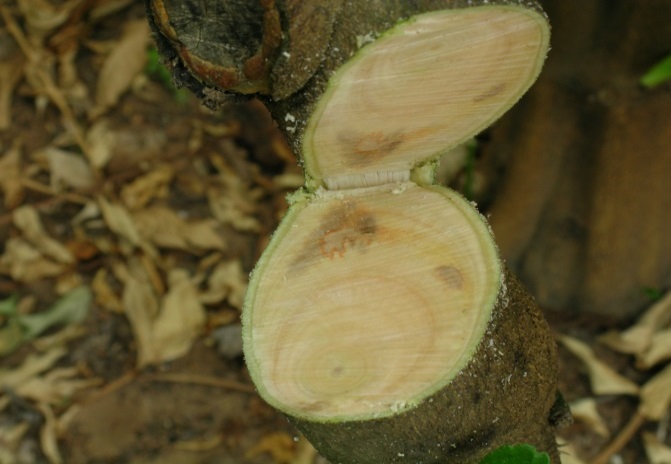
Mal secco
| Primefact number | Edition | Published | Author |
|---|---|---|---|
| 1197 | Second | Apr 2017 | Plant Biosecurity and Product Integrity |



Mal secco is a fungal disease caused by Plenodomus tracheiphilus. After initial infection the fungus spreads systemically in the tree killing infected limbs and eventually the whole tree (Figure 1).
Mal secco is Italian for “dry disease’.
Mal secco (Phoma tracheiphila) is an exotic plant pest not present in Australia. This disease is a serious threat to Australia’s citrus industry.
Notifiable status
Mal secco (Phoma tracheiphila) is a notifiable plant disease in NSW.
All notifiable plant pests and diseases must be reported within 1 working day. You can report notifiable plant pests and diseases by one of the following methods:
- Call the Exotic Plant Pest Hotline 1800 084 881
- Email biosecurity@dpi.nsw.gov.au with a clear photo and your contact details
- Complete an online form
A full list of notifiable plant pests and diseases can be found in Schedule 2 of the NSW Biosecurity Act 2015.
Symptoms
The first symptoms appear in spring as yellowing and wilting of leaves and shoots followed by dieback of twigs and branches. Leaf stalks often remain on the stem after the leaves drop.
Suckering and regrowth occurs from the base of affected branches and from the rootstock.
On affected twigs raised black spots within ash grey areas of withered twigs indicate the presence of fungal fruiting structures called pycnidia (Figure 2).
When infected branches are cut a characteristic salmon-pink or orange-reddish discolouration of the internal wood may be seen. Over time the discolouration darkens to brown-black. Gum production within the water transport system of the plant is evident (Figure 3).
Trees are susceptible to infection at any age. Young trees tend to be more severely affected. Gradually the whole tree is affected which results in tree death.
Hosts
Mal secco is most prevalent and severe on lemon (Citrus x limon), lime (Citrus x aurantiifolia), citron (Citrus medica) and bergamot (Citrus x bergamia).
All citrus species are susceptible to Phoma tracheiphila by artificial inoculation under laboratory conditions.
Disease
The fungus enters the tree through wounds in leaves, branches and roots.
In addition to the more common form of the disease mal secco, two other forms occur. ‘Mal fulminante’ is a form of the disease resulting in rapid death due to the roots becoming infected. ‘Mal nero’ is a chronic infection which leads to browning of the heartwood.
Spread and movement
Long distance spread of mal secco occurs through the movement of infected citrus plants or plant parts.
Short distance spread of mal secco occurs when fungal spores are dispersed from infected trees and debris by rain splash or overhead irrigation and wind-blown rain.
Wound entry points can be created by weather evens such as wind, hail or frost damage. Management practices such as pruning or harvesting can cause injury to citrus trees increasing the risk of infection.
World distribution
Mal secco is present in all citrus producing countries in the Mediterranean and Black Sea areas with the exception of Spain, Portugal, Morocco and some areas of the Arabian Peninsula.
Australia is currently free of mal secco.
Management options
Prevention is the best option to protect against mal secco.
There is no cure for mal secco.
Mal secco is difficult to control but can be managed by pruning and then burning infected twigs at the first sign of symptoms.
Actions to minimise risks
Put in place biosecurity best practice actions to prevent entry, establishment and spread of pests and disease:
- practice “Come clean, Go clean”
- ensure all staff and visitors are instructed in and adhere to your business management hygiene requirements
- source propagation material of a known high health status from reputable suppliers
- keep records

